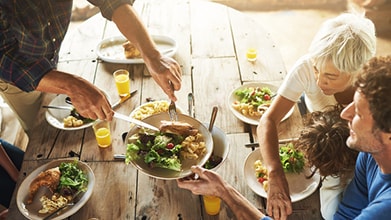Key points
- Salmonella can spread to people in many ways.
- Most often, the bacteria spread through food.
- Salmonella also can spread through water, animals, people, and other ways.
- You can take steps to help prevent infection.

Some common sources of infection
Contaminated food
Salmonella most often spread to people through contaminated food. CDC estimates that most Salmonella infections are linked to chicken, fruits, pork, seeded vegetables (such as tomatoes), other produce (such as nuts), beef, and turkey. But any food can become contaminated, even processed foods (such as flour).
Cross-contamination
Foods that are contaminated with Salmonella can spread germs to other foods if they are not kept separated. Unwashed hands, chopping boards, and knives can also spread germs from these foods to other foods.
Foods linked to outbreaks
Recent outbreaks of Salmonella infection have been linked to many kinds of foods. These foods include chicken products, ground turkey, ground beef, other meats, and seafood. Sprouts, nut butters, cantaloupes, cucumbers, onions, basil, raw cookie dough, and flour also have been linked to recent outbreaks.
Reminder
Contaminated water
Salmonella can contaminate drinking, irrigation water (water used to grow food), and recreational water.
People can get infected if they drink water that has not been made safe, including by drinking water from streams, ponds, and lakes when swimming or camping.
If water containing Salmonella is used for irrigating or cleaning produce, Salmonella can contaminate fruits and vegetables before or after harvest.
Contact with animals
Pets and other healthy animals can carry Salmonella and other germs that make people sick. These animals include ones at petting zoos, farms, and fairs and even schools and daycares.
These germs can spread through an animal's poop, belongings (such as toys and bowls), or habitats (such as beds, cages, tanks, coops, stalls, and barns).
Contact with people
Sometimes germs can spread from a person with diarrhea to another person through unwashed hands or sexual contact.
